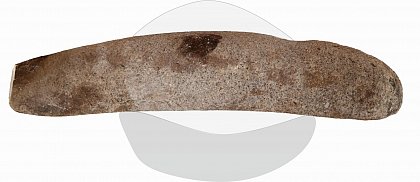How did bread come to Central Europe? Investigations into the role of the Neolithic settlement of Brunn am Gebirge near Vienna
Funding Austrian Academy of Sciences, MA7
Team: PI Laura Dietrich, PostDoc Alexander Minnich
Food is the basis of metabolism and therefore of life. Its procurement and consumption have thus substantial impact on the biological, cultural, psychological, sociological and economic development of humankind. Within archaeology, a special field of research into nutrition ("food archaeology") was developed. Numerous studies on the production, preparation and consumption of food and on disposal practices ranging from political, cultural and economic contexts have been carried out in the last two decades.
These questions are of particular importance in relation to a key period in human history. In the late 10th and especially in the 9th century BC, societies in south-west Asia began to actively transform their natural environment. The process of Neolithisation defines an epoch that fundamentally and irreversibly changed the world: the hunter-gatherer became farmers, humans repositioned themselves in relation to their environment and began to systematically change and control it. This process, spanning several millennia, ranges from the systematic utilisation of new food sources such as cereals to the systematically genetic modification of plants and animals in the course of domestication, and the invention of new technologies. The Neolithic means more stable food sources and permanent, intensive settlements. The newly acquired knowledge spreads in several ways as a “Neolithic package” from the core area in Southwestern Asia towards Western Anatolia and Europe. Its emergence was preceded by a long period of experimentation and technological modification, characterised by the development of special tools for deforestation and land preparation for cultivation and food preparation.
Grinding stones, which under the generic name of "tools for grinding, crushing and pounding" are part of it. This category of finds comprises a wide range of tool sets consisting of active and passive parts as the most important tools for the processing of cereals.
The Early Neolithic world of Upper Mesopotamia and the Levant is characterised by a wide variety of grainding stones, processing techniques and products. Meals such as porridges and beers dominate in this region. Fine flour and bread became widespread only in the Late Neolithic, from the middle of the 7th century onwards. From the Northern Levant and Upper Mesopotamia, some processing techniques most likely spread westwards along the Anatolian coast, a reconstruction that fits in well with current research findings on the spread of Neolithisation. Only parts of these cooking traditions, including the use of mortars and pestles, reached Southeastern Europe.
However, the majority of the tools characteristic of the region of origin are absent in Central Europe. The Early Neolithic settlement of Brunn am Gebirge (5700-5100 BC) brings crucial archaeological evidence on a major change of food habits and processing techniques of cereal meals, which then spread in the rest of Europe.
The site was excavated by the Prehistoric Department of the Natural History Museum Vienna under the direction of PD Dr Peter Stadler between 1989 and 2005 and is part of a landscape that was settled several times from the Early Neolithic to the Avar period.
More than 80 longhouses are features of a large settlement, in whose assemblages influences from the Starčevo culture (Hungary, Croatia, Serbia, Romania) can probably be observed, but also new elements that ultimately contributed to the emergence of the Linear Pottery, the first culture of Neolithic farmers in Central Europe. The Early Neolithic settlement of Brunn am Gebirge is a key find in Neolithic archaeology in Europe and has been presented in two detailed monographs.
In addition to pottery, figurines and stone tools, the most common category of finds with over 90 finds are sets of grinding stones, consisting of saddlequern-type netherstone, two-handed and one-handed handstones.
The project’s aim is to investigate the full spectrum of grinding stones related to processing practices of cereals and cereal meals from Brunn as a key site and the transmission ways to Central Europe. Brunn is most likely the place of origin of a certain type of over-ranging handstone, which was later adopted in central and north-western Europe and became the main tool for the production of bread. This handstone is an extremely heavy and long tool that can be used to generate hard pressure in order to grind grain to particularly finely flour. Grinding with bidirectional motion and very hard pressure with this heavy type of handstone is a new technique in the Neolithic period in Central Europe. In this pilot project we want to approach this category of finds with modern techniques and methods: 3D modelling combined with macrophotography with side lighting, microscopic analysis of the surface deformation as well as residue analyses and experimental reconstructions of Neolithic recipes.

Set of handstone and saddle quern from Brunn (3D Model Laura Dietrich, ©Laura Dietrich)



